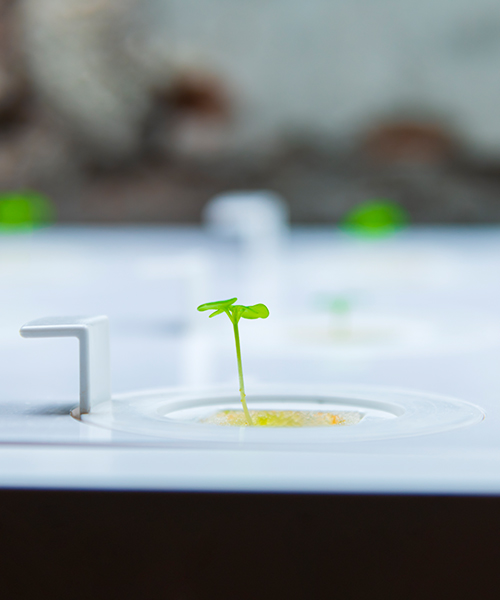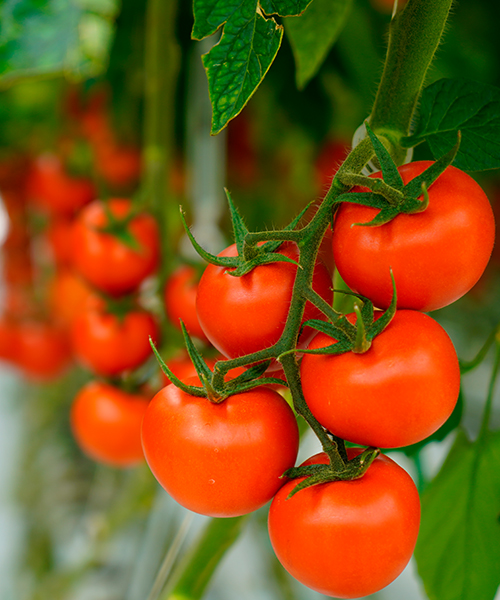
15-minute city
15-minute city
These cities are characterized by having stores, schools, parks, and workplaces within a 15-minute accessible distance. Want to learn more about them?

Hydroponic crops
Keys to a more sustainable future
Hydroponics, an agricultural method characterized by a more efficient use of resources, is gaining popularity in both fine dining and domestic environments. Its growth not only reflects a trend, but signals a practical and efficient response to today's agricultural challenges, providing viable and sustainable solutions for food production.


Hydroponics is a method of plant cultivation that completely omits soil as a support system for the roots.
Given the context of soil scarcity and challenges caused by climate change, hydroponic crops present themselves as a practical and sustainable solution for today's agriculture.
Instead of relying on soil, essential nutrients are supplied directly to the roots of the plants, through a water-based solution containing all the minerals necessary for their growth.
This technique not only offers precise control over growing conditions, but also stands out as a more sustainable practice compared to traditional agriculture by eliminating the need for agricultural soil.
Hydroponics characteristics
Hydroponic systems are distinguished by a number of key characteristics:


.jpg)
Hydroponic systems are distinguished by a number of key characteristics:
Soilless system
Completely eliminates soil, replacing it with a nutrient-rich water-based solution.
Precise control of nutrients
A mixture with adequate concentrations of essential nutrients, such as nitrogen, potassium, phosphorus, calcium, magnesium, and sulfur, is supplied in hydroponic cultivation.
Controlled environment
A hydroponic garden incorporates systems to regulate environmental factors such as light, temperature, and humidity, creating an optimal environment for plant growth.
Specific infrastructure
The implementation of hydroponics often requires specific infrastructures, such as water recirculation systems, pumps, pH and conductivity meters, controlled lighting, among others.
Continuous monitoring
It is essential to maintain constant surveillance to ensure that nutrient levels, pH, and other factors remain within optimal ranges.
Types of hydroponic systems
Hydroponic systems are diversified into several types, each designed for a specific purpose, making them more suitable choices for specific types of crops. Some of the most common options include:
Our energy plans
Discover Repsol's energy plans for your home and choose the one that best suits you.
Advantages of hydroponic crops
Hydroponic crops offer several advantages:
Efficient use of water
Hydroponics uses less water compared to traditional agriculture, as water is recirculated in many systems, reducing waste.
Control of nutrients
Farmers have precise control over the composition and concentration of the nutrients the plants receive, allowing for optimal and customized nutrition.
Reduced risk of pests
The absence of soil significantly reduces the risk of soil-borne pests and diseases, reducing the need for pesticides and herbicides.
Adaptability to a variety of environments
From urban environments to at-home hydroponics, this method can be implemented in areas with soils unsuitable for conventional agriculture.
Increased control of the environment
Hydroponic systems allow precise control of environmental factors such as temperature, humidity, and lighting, favoring optimal plant growth.
Accelerated growth
Hydroponics allows for faster growth compared to traditional cultivation methods thanks to the controlled supply of nutrients.
Less dependence on the weather
By having control of the environment, hydroponic crops are less dependent on external climatic conditions, reducing the risks associated with adverse weather events.
Year-round harvests
Hydroponics allows for continuous cultivation, regardless of the season, providing a constant supply of fresh produce.
Reduced use of space
Hydroponic systems, such as vertical or layered systems, make efficient use of space, allowing cultivation in small areas.
You may be interested in

15-minute city
These cities are characterized by having stores, schools, parks, and workplaces within a 15-minute accessible distance. Want to learn more about them?

Bioclimatic architecture
Bioclimatic construction refers to the design of buildings that make the most of natural resources and the environment's climatic conditions to reduce consumption and improve energy efficiency.

Phantom power consumption
Phantom power consumption refers to the electricity consumed by certain electrical appliances and devices when we are not using them.